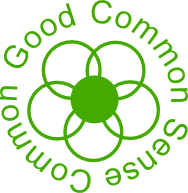March 2021 - Charlbury – A Home For Wildlife
Published in Charlbury Chronicle March 2021
The last year has made many of us more aware of our relationship with nature, how we share our world with other creatures, and how it is our very relationships with these other creatures that make us human.
Dog ownership has soared. Dogs have traditionally co-habited with humans in a working role. A rage for lap dogs and dogs as pets emerged with the Victorian middle classes. This has continued such that the 2020 PDSA Animal Well Being (PAW) report says that 41% of all households in the UK have a pet, with 11 million cats, 10 million dogs and 1 million rabbits.
In the past we lived closely with a larger variety of animals. We’d sleep above the pigsty to keep us cosy; we might have had a dormouse in our pocket to keep our hands warm. When I was a child there were sparrows, starlings, swifts and bats living in the roof of our house.
Sometimes very early on particularly cold mornings, before light, I can hear scurrying on or in my roof, and I find it comforting that a field mouse or vole from the garden is finding a bit of warmth - as long as it doesn’t bite through the electrical cables. My house is particularly popular with several kinds of spiders, I find lady birds and lacewings in the folds of curtains. Late evenings tawny owls arrive and might spend an hour communing in the nearby trees or on the roof – obviously keeping a look out for one of those mice. A neighbourhood cat will walk through also looking for mice. And there are birds - I have a couple of wood pigeons, some blackbirds, different tits, robins, house sparrows or dunnocks nesting nearby and sometimes a spotted woodpecker or a goldfinch pops in and on rare occasions a sparrowhawk will make a foray. Each year beautiful emperor dragonflies emerge and cruise up and down the garden. I’m always pleased to see frogs and have put in a couple of small ponds to encourage them. Last Summer I picked up the paw prints of a hedgehog - our precious Charlbury Hedgehogs will be more active soon as the warm Spring weather arrives. Insect loving flowers encourage butterflies and numerous pollinators. Early last Summer I had a nest of bumble bees in the ground which I worked out were the tree bumble bee, Bombus hypnorum. At the end of the Summer wasps nest in the roof, they are very mild and rarely survive the winter, and I leave them alone – after all they too are important pollinators. I know rats are always near us but they are shy animals and I hardly ever see them.
It would be so interesting to hear about the wild creatures that live in your house or garden. Someone was telling me about a very large grass snake at the bottom of their garden. We can encourage wild animals by providing appropriate habitat and food sources, by leaving what we consider untidiness – wilderness in our gardens.
When I first came to Charlbury in the 1970s there were more dilapidated buildings than there are now. Over the last 50 years, alongside the industrialisation of agriculture in the countryside (with the accompanying wildlife food and habitat loss), there has been much renovation and building in the towns and villages. We have filled in the nooks and crannies where creatures took refuge. While swifts, for instance, may have lived in Charlbury for decades, many of their original nesting sites in our houses will have been filled in so that now if we want them to keep revisiting us every Summer and able to nest and bring up their offspring, we have to make a concerted effort to provide them with nesting sites with special holes in our buildings or nesting boxes. There are about 50 swift nesting sites around Charlbury, the majority are constructed by humans. Each year the young swifts look for potential nesting sites for the next year.
You are invited on Thursday 11th March 19.30 to join
Rachel Pearson, a volunteer with the Oxford City Swift Project on Zoom. Rachel will tell us how the project is providing other nesting sites around Oxford for these spectacular and iconic birds in addition to the Oxford University Museum Swift Tower, the best recorded nesting site in the country – so that Oxford can truly be the city of swifts. Please email charlburywildlife@charlburygreenhub.org.uk for more information.
FG
